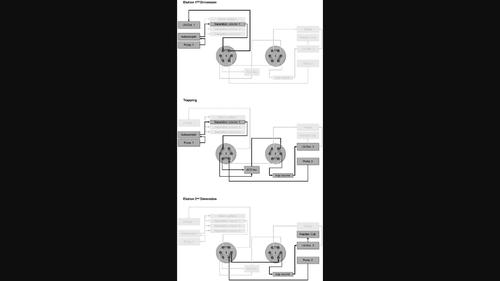当前位置:
X-MOL 学术
›
J. Label. Comp. Radiopharm.
›
论文详情
Our official English website, www.x-mol.net, welcomes your feedback! (Note: you will need to create a separate account there.)
Small-scale two-dimensional liquid chromatography for a preparative re-purification of a highly labile tritium-labeled compound
Journal of Labelled Compounds and Radiopharmaceuticals ( IF 1.8 ) Pub Date : 2023-05-05 , DOI: 10.1002/jlcr.4028 Martin Sandvoss 1 , Christian Klaus 1 , Remo Weck 1 , Volker Derdau 1 , Matthias Schiell 2
Journal of Labelled Compounds and Radiopharmaceuticals ( IF 1.8 ) Pub Date : 2023-05-05 , DOI: 10.1002/jlcr.4028 Martin Sandvoss 1 , Christian Klaus 1 , Remo Weck 1 , Volker Derdau 1 , Matthias Schiell 2
Affiliation

|
Tritium-labeled compounds are generally less stable than their non-labeled counterparts. This requires storage at low temperatures, a constant workflow of quality checks, and subsequent re-purifications. As the amount of tritium-labeled material is typically purified in the μg range, repeated injections on analytical-scale ultra high-performance liquid chromatography systems can provide high-resolution re-purification results. Yet, degradants can be undesirably included in the compound isolation because the amount of decomposition can vary dramatically depending on the structure. We report a case of a sensitive molecule that could not be isolated in pure form even though the chromatographic separation was successful. In this case, the use of a small-scale two-dimensional preparative liquid chromatography approach with a direct transfer interface to a second (trapping) column resulted in a highly pure compound (>98% radiochemical purity). This approach combines high chromatographic resolution, accurate control over the re-purification process, minimal sample manipulation, and higher overall safety for the handling of radioactive samples.
中文翻译:

用于高度不稳定的氚标记化合物的制备性再纯化的小规模二维液相色谱
氚标记的化合物通常不如未标记的化合物稳定。这需要低温储存、持续的质量检查工作流程以及随后的重新纯化。由于氚标记材料的纯化量通常在 μg 范围内,因此在分析级超高效液相色谱系统上重复进样可以提供高分辨率的再纯化结果。然而,降解物可能不希望地包含在化合物分离中,因为分解量可能根据结构而显着变化。我们报告了一个敏感分子的案例,即使色谱分离成功,也无法以纯形式分离出来。在这种情况下,使用小规模二维制备型液相色谱方法以及与第二个(捕获)柱的直接传输接口可产生高纯度的化合物(> 98% 放射化学纯度)。这种方法结合了高色谱分辨率、对再纯化过程的精确控制、最少的样品操作以及处理放射性样品的更高的整体安全性。
更新日期:2023-05-05
中文翻译:

用于高度不稳定的氚标记化合物的制备性再纯化的小规模二维液相色谱
氚标记的化合物通常不如未标记的化合物稳定。这需要低温储存、持续的质量检查工作流程以及随后的重新纯化。由于氚标记材料的纯化量通常在 μg 范围内,因此在分析级超高效液相色谱系统上重复进样可以提供高分辨率的再纯化结果。然而,降解物可能不希望地包含在化合物分离中,因为分解量可能根据结构而显着变化。我们报告了一个敏感分子的案例,即使色谱分离成功,也无法以纯形式分离出来。在这种情况下,使用小规模二维制备型液相色谱方法以及与第二个(捕获)柱的直接传输接口可产生高纯度的化合物(> 98% 放射化学纯度)。这种方法结合了高色谱分辨率、对再纯化过程的精确控制、最少的样品操作以及处理放射性样品的更高的整体安全性。



























 京公网安备 11010802027423号
京公网安备 11010802027423号